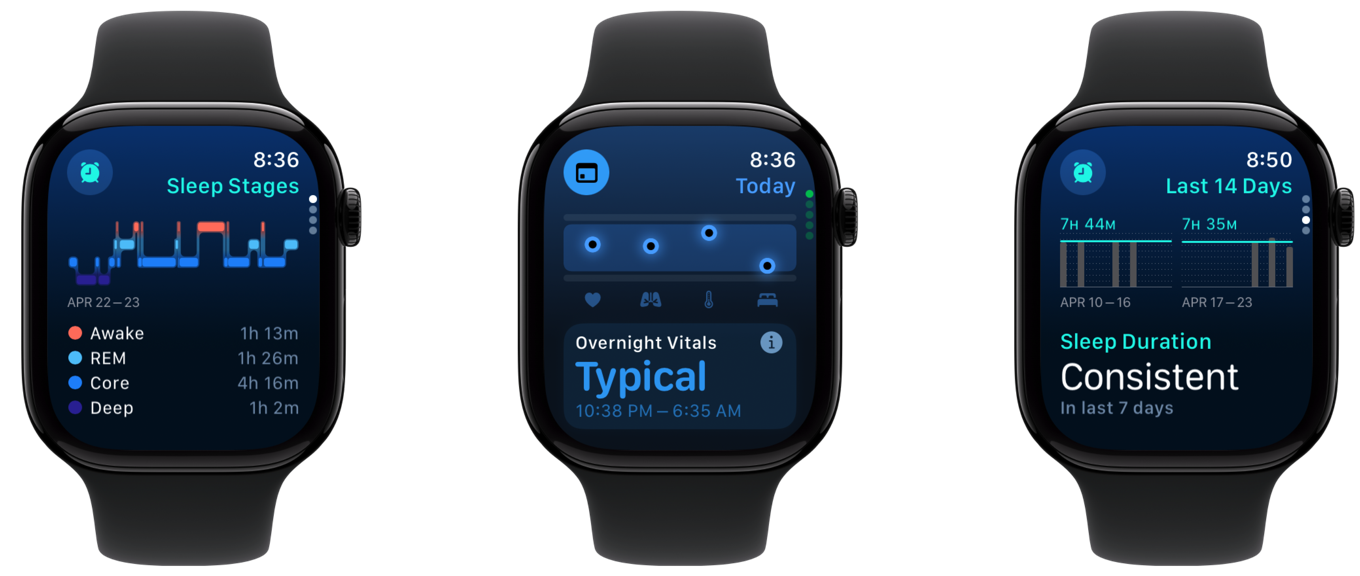
I never reviewed the Apple Watch Series 10 when it came out, but I got one on day one and have been wearing it faithfully since then. After lingering on a previous model for a few years, the thinner design of the Series 10 appealed to me, and after wearing it for seven months, I can say that I’m glad I made the purchase, and it’s a great update.
My biggest criticism of the Series 10 is the failure of watchOS to live up to the Apple Watch hardware. (Apple’s software development not keeping pace with its hardware development has sadly become a “dog bites man”-style commonplace event.) Most notably, the Series 10 display is capable of a once-per-second refresh during always-on mode that enables two watch faces to show a ticking second hand. An always-on second hand seems like a small thing, but it makes the Apple Watch that much closer to analog watches. It’s a bit of a milestone.
How sad, then, that it’s only those two watch faces that support per-second ticks. None of the older watch faces—including the ones I use—support the feature. I don’t know what Apple’s investing in building watchOS watch faces, but it’s not enough—a major new hardware feature should be supported by every watch face, not just the two new ones introduced at the same time as the feature. In a year full of embarrassing Apple moves, this is low-key one of the most embarrassing.
There you go: 250 words about the Apple Watch Series 10. But what I really want to discuss here is Apple’s insistence that we all sleep wearing our Apple Watches. Apple’s sleep tracking features have been pushing in this direction for a while, and the addition of sleep apnea detection last fall really pushed it over the edge. You don’t have to wear your Apple Watch overnight, but Apple really wants you to.
I have never, ever worn my Apple Watch overnight. To me, the end of the day means that I take off my watch, attach it to a charger, and get into bed. I use my watch in Night Stand mode as a clock, and if I set an alarm, it chimes on my bedside table at the appointed hour. Nice and easy.
But since September, I have been wearing my Apple Watch on my wrist most nights. I wanted to test out sleep apnea detection and use the sleep tracking features I’d almost never used before, so I committed to the lifestyle change.
I miss having a consistent charging time. I try to remember to charge first thing in the morning, and when I take a shower (as a work-from-home type, those aren’t always close to one another), but sometimes I forget and run out of battery at an inopportune moment. I don’t love that Apple still thinks the Apple Watch should automatically update its software overnight when on a charger, since we’re not supposed to wear it that way, which means I’ve needed to update watchOS manually during the day.
Surprisingly, having the watch on my wrist while I sleep has not been an issue. I was worried it would be bulky and distracting, but I got used to it almost immediately. And to my surprise and delight, I’ve found that I vastly prefer being tapped on my wrist as an alarm in the morning over being played a noisy chime.
But beyond subtle alarms, what have I gotten out of shifting my schedule and wearing the watch to bed? In the morning, I get a special “Good Morning Jason” screen that shows some facts about my day that I can’t quite remember because I am still waking up when I see it. I have months of sleep tracking data that tell me that I mostly sleep well, and if I’m curious about when I woke up in the night that information is there—last night I woke up at 3 a.m. and couldn’t get back to sleep for a while, and thank goodness that’s been logged. But I struggle to find anything actionable to do with this data.
Similarly, the new Vitals app is interesting but generally just says that everything’s more or less normal every single night. That’s great, and I guess I’m fortunate, but I’m not sure much is being added here.
Sleep apnea detection and elevated breathing irregularities were the areas I was most interested in, because I am a snorer with seasonal allergies. The good news: Apple told me I probably didn’t have sleep apnea! Beyond that, though, the breathing data has just felt meaningless to me—at least, until this spring, which has shown an increase in breathing irregularities. So at least I have a chart that shows my seasonal allergies kicking into gear.
In the end, I’m not sure if sleeping with my Apple Watch has really been worth it for me. The silent alarm taps are great, but the loss of a consistent charging cue has made me need to worry about my watch’s current charge state way more than I used to. The health data is nice, but not particularly actionable. In general, Apple’s Health app needs to be less of a data soup and provide more actionable analysis.
In the end, I appreciate the Apple Watch platform mostly for relaying messages, tracking my workouts, and playing podcasts to my AirPods when I’m walking or running with my dog (without bringing my iPhone along). Maybe there are lots of people for whom sleeping with the Apple Watch makes sense, but as for me, I think my experiment may be at an end.
If you appreciate articles like this one, support us by becoming a Six Colors subscriber. Subscribers get access to an exclusive podcast, members-only stories, and a special community.
